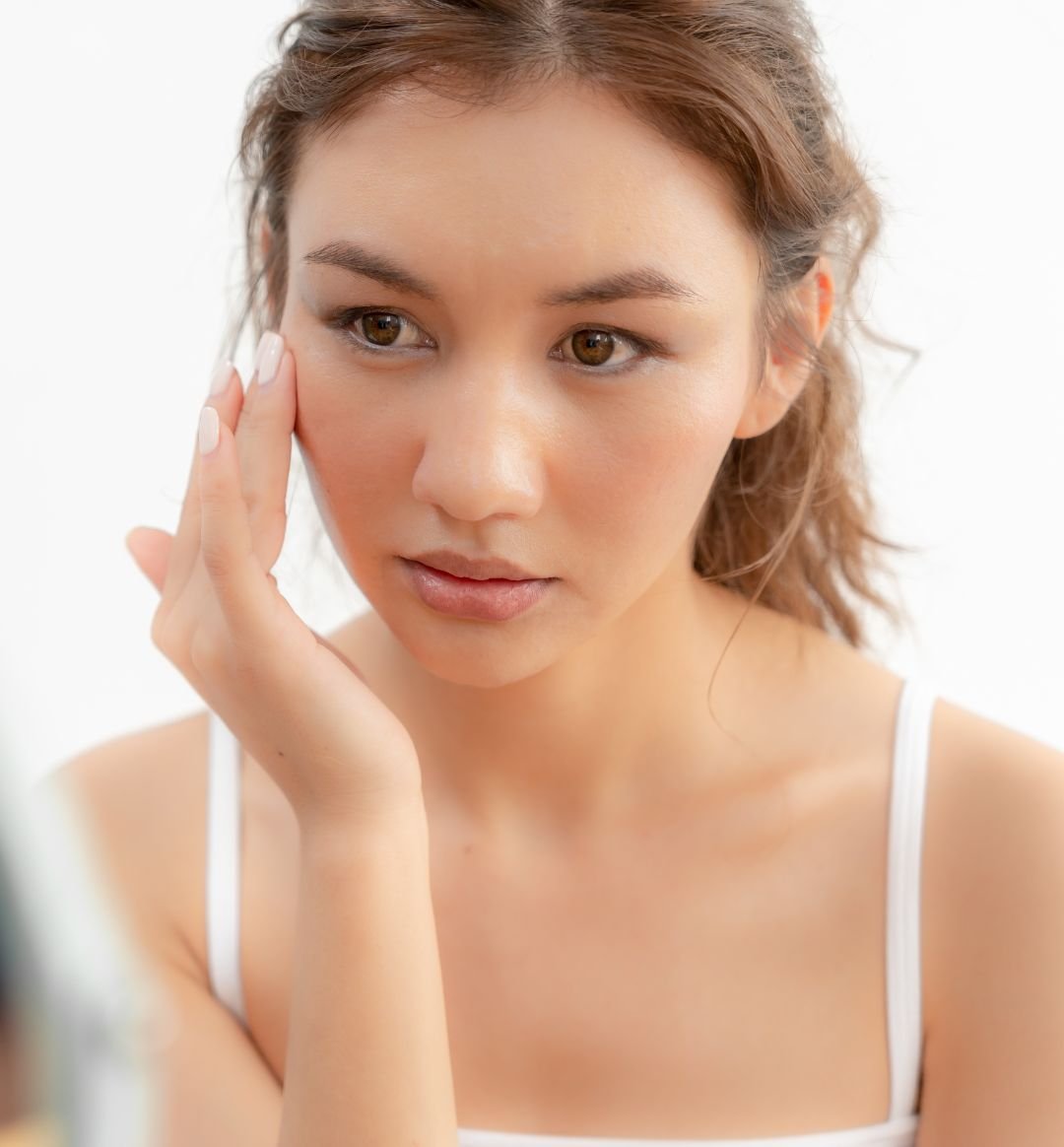That tight, uncomfortable feeling. Makeup that won’t sit properly. Fine lines that look more visible than ever. If you’re experiencing these symptoms, your skin isn’t just dry—it’s dehydrated. While many of us focus on addressing surface-level dryness, understanding the difference between dry and dehydrated skin is key to achieving that coveted healthy glow.
Understanding the Dehydration Difference
Let’s get scientific for a moment: the outer layer of your skin (epidermis) is designed to be a protective barrier, containing about 64% water. When that water content drops, you’re not just dealing with surface dryness—you’re dealing with cellular dehydration. Think of it like a grape turning into a raisin. When the skin loses its water content, it literally deflates at the cellular level.
Unlike dry skin, which is a type you’re born with, dehydration is a condition that can affect anyone, regardless of skin type. Yes, even if you have oily skin! In fact, dehydrated skin often overproduces oil to compensate for water loss, leading to a frustrating combination of oiliness and flaking.
Signs that your skin is crying out for hydration
- Increased visibility of fine lines
- Skin that feels tight but looks radiant
- Dullness and uneven texture
- Makeup that makes patches or pills
- “Pinch Test” shows slow bounce

The Hydration Solution: A Layered Approach
Step 1: Gentle cleansing
Start with ours Green Tea Foaming Cleanser. This ultra-gentle formula uses cloud-like foam to lift away impurities while maintaining your skin’s delicate moisture barrier. Green tea provides antioxidant protection, while coconut-derived cleansers ensure your skin is never stripped.
Step 2: Hydrating Foundation
Follow immediately with ours Flower Water Toner. Toners add an extra layer of hydration and deliver essential nutrients to your skin. They help tighten pores, remove residual impurities and restore the skin’s natural pH balance. The flower water in this toner provides additional anti-inflammatory and hydrating benefits, leaving your skin feeling refreshed and rejuvenated.
Step 3: Targeted therapy
Add ours Hyaluronic acid rose serum for extra hydration and firmness make sure it makes your skin firmer and brighter.
Step 4: Lock it
We stamp everything with ours Restorative Sea Culture Extra Rich Créme. This luxurious treatment is made with rich butters and oils and features nutrient-rich marine minerals and hydrating algae to plump and strengthen your skin.
Advanced tips for serious hydration
Use a sheet mask weekly
Us Deep moisturizing sheet mask replenishes dry, thirsty skin with aloe juice and a nourishing trio of cucumber, hyaluronic acid and plant ceramides. This water-infused blend of botanicals locks in long-lasting hydration to leave skin feeling ultra-firm, soft and supple. Anti-inflammatory rose, ylang ylang and chamomile help calm skin, while beta-glucan soothes and hydrates.
Strategic Hydration Timing
Apply products within 60 seconds of cleansing—this “golden minute” is when your skin is most receptive to moisturizing ingredients.
Protection of the Environment
Use ours Yerba Mate Mist SPF 30 daily. This mineral sunscreen offers broad-spectrum protection from UVA and UVB rays. It also contains antioxidants that help neutralize free radicals created by UV exposure, providing an extra layer of defense against environmental damage.

Lifestyle factors that affect hydration
- Indoor heating and cooling systems
- Warm showers (keep them warm, not hot!)
- Excessive caffeine consumption
- Alcohol intake
- Pollution of the environment
- Screen time (yes, really – blue light can dehydrate skin)
The Long-Term Approach
Think of hydration as a long-term relationship with your skin, not a quick fix. Consistency is key and results build over time. After 28 days of following this routine—the time it takes for your skin to complete a full renewal cycle—you should notice:
- Thicker, more intense skin texture
- Reduced appearance of fine lines
- More even tone and improved shine
- Makeup that applies smoothly and lasts longer
- Balanced oil production
When to see a professional
While dehydrated skin is usually manageable with the right skin care routine, consult a dermatologist if you experience:
- Persistent peeling despite proper hydration
- Unusual tenderness or redness
- Itching or burning sensation
- Sudden changes in skin texture
The bottom line
Hydrated skin is healthy skin and achieving it doesn’t have to be complicated. Focus on gentle water-binding ingredients, be consistent in your routine, and remember that hydration comes from the inside as well as the outside. With the right approach and products, you can transform your skin from dehydrated to dewy, revealing your natural, healthy glow.
Remember: All 100% PURE products listed are made without harsh chemicals, synthetic fragrances or artificial preservatives. Our commitment to pure, natural ingredients means you get the most effective hydration without compromising your skin’s health.
Frequently Asked Questions
Can I be dehydrated even if I have oily skin?
Absolutely! In fact, oily and dehydrated skin often go hand in hand. When your skin is dehydrated, it can overproduce oil to compensate for the lack of water. This is why you may experience shine and peeling at the same time. The key is to use water-based moisturizers rather than heavy oils.
How is dehydrated skin different from dry skin?
Dry skin is a skin type that lacks oil, while dehydrated skin is a condition that lacks water. Dry skin is something you’re usually born with, while dehydration can affect any skin type and is usually temporary. Think of it this way: dry skin needs oil-based products, while dehydrated skin needs water-based hydration.
Why does my skin feel tight even after moisturizing?
If your skin feels tight even after applying moisturizer, you may be missing the crucial step of hydration. Remember: hydration (water) comes before hydration (oil).
How long does it take to repair dehydrated skin?
With consistent use of appropriate moisturizing products, you should notice improvements within 2-4 weeks. However, the exact timing depends on several factors:
- Severity of dehydration
- Consequence of your skin care routine
- Environmental factors
- Internal hydration levels
- General skin health
